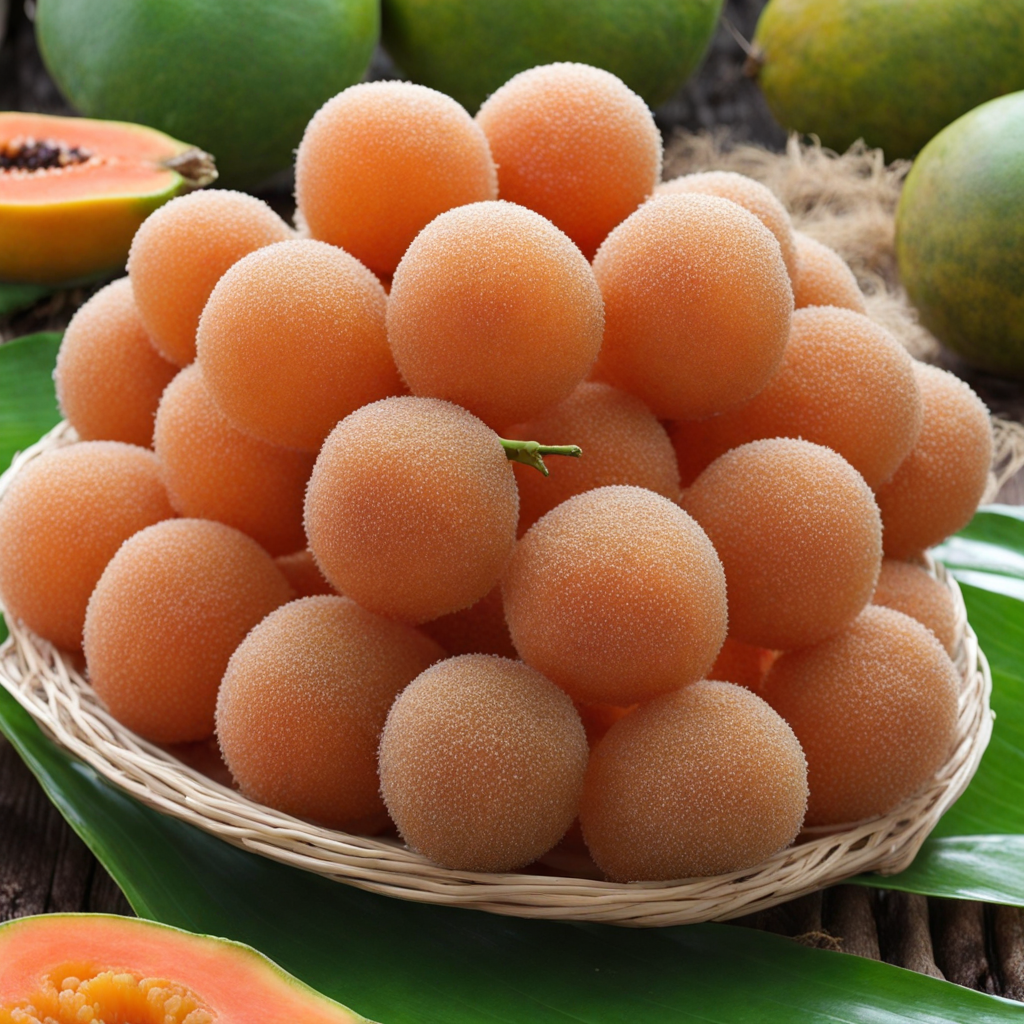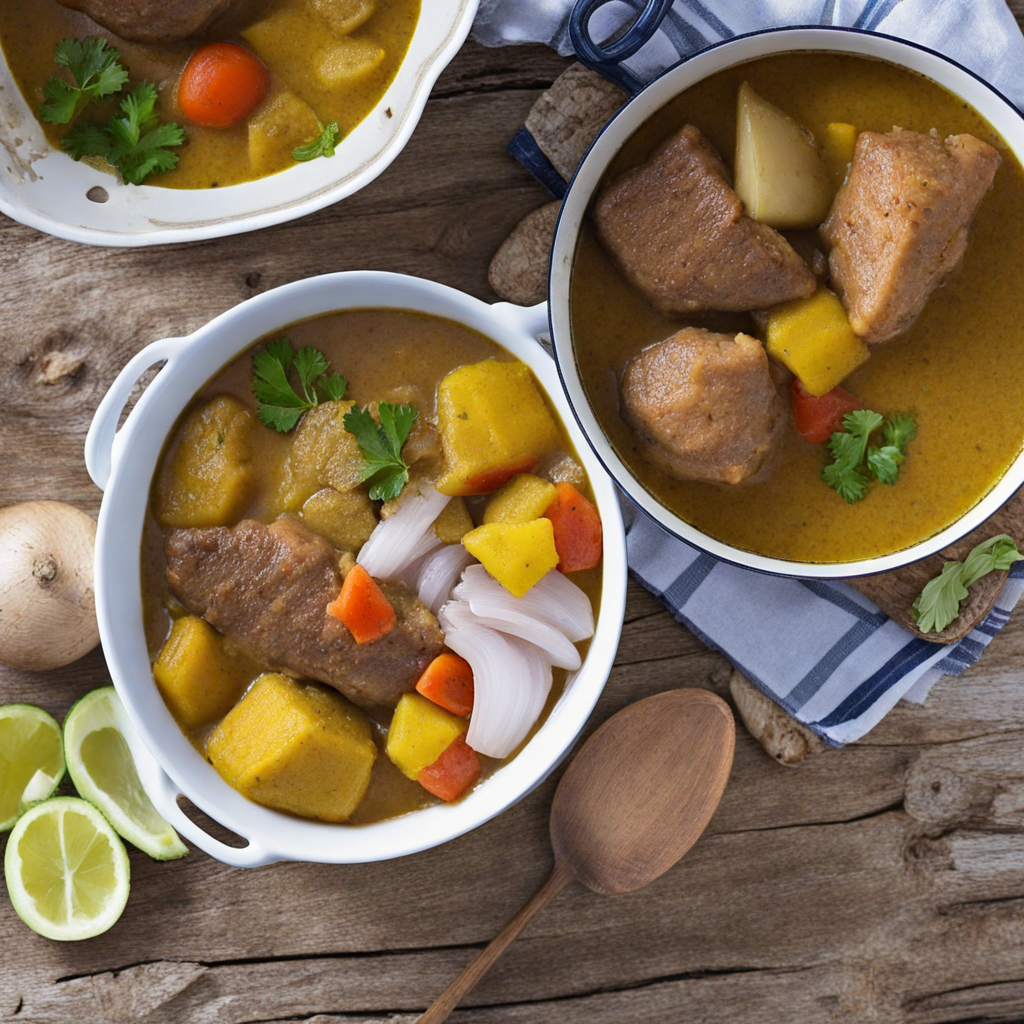Pawpaw Ball
Pawpaw Ball is a delightful treat hailing from the beautiful island of Dominica, where the natural sweetness of the pawpaw (or papaya) fruit shines through. This unique delicacy combines ripe pawpaw with a blend of spices, sugar, and sometimes a hint of citrus, creating a vibrant and flavorful experience. The fruit is mashed and then rolled into small balls, often coated with shredded coconut or crushed nuts, adding a lovely texture to each bite. The bright orange hue of the pawpaw not only makes the dish visually appealing but also hints at the rich, tropical flavor that awaits.
How It Became This Dish
The Pawpaw Ball: A Sweet Slice of Dominica's Culinary Heritage Nestled in the heart of the Caribbean, the island of Dominica is renowned not only for its lush landscapes and vibrant culture but also for its rich culinary traditions. Among the many distinctive dishes that grace its tables, the Pawpaw Ball stands out as a delightful representation of the island's local ingredients and cultural significance. This sweet treat, made from the pawpaw fruit, is not just a dessert; it is a testament to the island's history, agriculture, and community spirit. Origins of the Pawpaw Ball The pawpaw, known as papaya in many regions, is native to the tropical Americas but has found a warm home in the Caribbean, particularly in Dominica. The fruit was introduced to the island by indigenous peoples and later embraced by European settlers, who recognized its potential. The name "pawpaw" is believed to have originated from the Arawakan word "papaya," illustrating the deep-rooted connection between the fruit and the island's indigenous heritage. The preparation of Pawpaw Balls likely began as a practical use of the abundant pawpaw harvest. Traditionally, pawpaw was valued not only for its sweet, succulent flesh but also for its nutritional benefits. Rich in vitamins A and C, as well as digestive enzymes, pawpaw has long been a staple in the diets of Dominicans. The transformation of this humble fruit into a sweet treat reflects the resourcefulness of the island's inhabitants, who utilized whatever was at hand to create something delicious and satisfying. Cultural Significance Pawpaw Balls are more than just a culinary delight; they embody the spirit and culture of Dominica. The dessert is often associated with celebrations, family gatherings, and community events. In a culture that values sharing and togetherness, Pawpaw Balls serve as a sweet offering that brings people together. Whether served at a festive dinner, a family reunion, or a local festival, these treats are a symbol of hospitality and the warmth of Dominican culture. Moreover, the preparation of Pawpaw Balls often involves the participation of multiple family members, emphasizing the importance of community and collaboration in Dominican society. Cooking is an integral part of life on the island, and the act of making Pawpaw Balls becomes a shared experience that strengthens familial bonds. The dessert, therefore, transcends its role as mere sustenance; it fosters connections and preserves traditions. Development Over Time As with many traditional dishes, the recipe for Pawpaw Balls has evolved over the years. Originally, the simple combination of mashed pawpaw, sugar, and spices was sufficient to create this delightful treat. However, as culinary practices evolved and influences from different cultures intermingled, variations of the Pawpaw Ball began to emerge. In the early 20th century, with the rise of tourism on the island, local chefs began to experiment with new flavors and presentation styles. They incorporated ingredients such as coconut, cinnamon, nutmeg, and even rum to enhance the flavor profile of the Pawpaw Balls. These innovations reflect the island's dynamic culinary landscape and the willingness of chefs to reinterpret traditional dishes for modern palates. Moreover, the globalization of food culture has led to an increased appreciation for local ingredients, allowing Pawpaw Balls to gain recognition beyond the shores of Dominica. Cookbooks, food blogs, and culinary tours have introduced this delightful dessert to a wider audience, showcasing the unique flavors of the Caribbean and encouraging others to embrace the regional cuisine. In recent years, the resurgence of interest in local and sustainable food practices has further solidified the place of Pawpaw Balls within Dominica's culinary scene. As more chefs and home cooks focus on using locally sourced ingredients, the pawpaw's role in the kitchen has grown. Farmers have also recognized the opportunity to promote pawpaw cultivation, not only for domestic consumption but also for export, enhancing the island's agricultural economy. The Pawpaw Ball Today Today, Pawpaw Balls remain a beloved dessert in Dominica, often featured in local restaurants and served at social gatherings. The dish has become a symbol of Dominican identity, encapsulating the flavors of the island and the stories of its people. Festivals celebrating local cuisine often highlight Pawpaw Balls, offering visitors a taste of the island's heritage while fostering a sense of pride among locals. Modern chefs continue to innovate while respecting tradition, experimenting with techniques such as freezing or frying the balls for different textures, or pairing them with contemporary sauces and toppings. The dessert has even found its way into fusion cuisine, with influences from international culinary trends blending seamlessly with traditional Dominican flavors. The pawpaw itself has also gained recognition as a superfood, thanks to its numerous health benefits. As global awareness of nutrition and wellness increases, the pawpaw has emerged as a star ingredient in health-conscious recipes, further elevating the status of Pawpaw Balls as a guilt-free indulgence. Conclusion The Pawpaw Ball is more than just a sweet treat; it is a culinary emblem of Dominica, reflecting the island's history, culture, and community. From its humble beginnings as a resourceful use of local ingredients to its contemporary status as a celebrated dessert, the Pawpaw Ball tells a story of resilience, innovation, and connection. As Dominica continues to evolve, so too will the Pawpaw Ball, but its essence—rooted in tradition, community, and love for the land—will always remain. In every bite, one can taste the rich tapestry of Dominican life, a true reflection of the island’s vibrant spirit and culinary heritage.
You may like
Discover local flavors from Dominica







